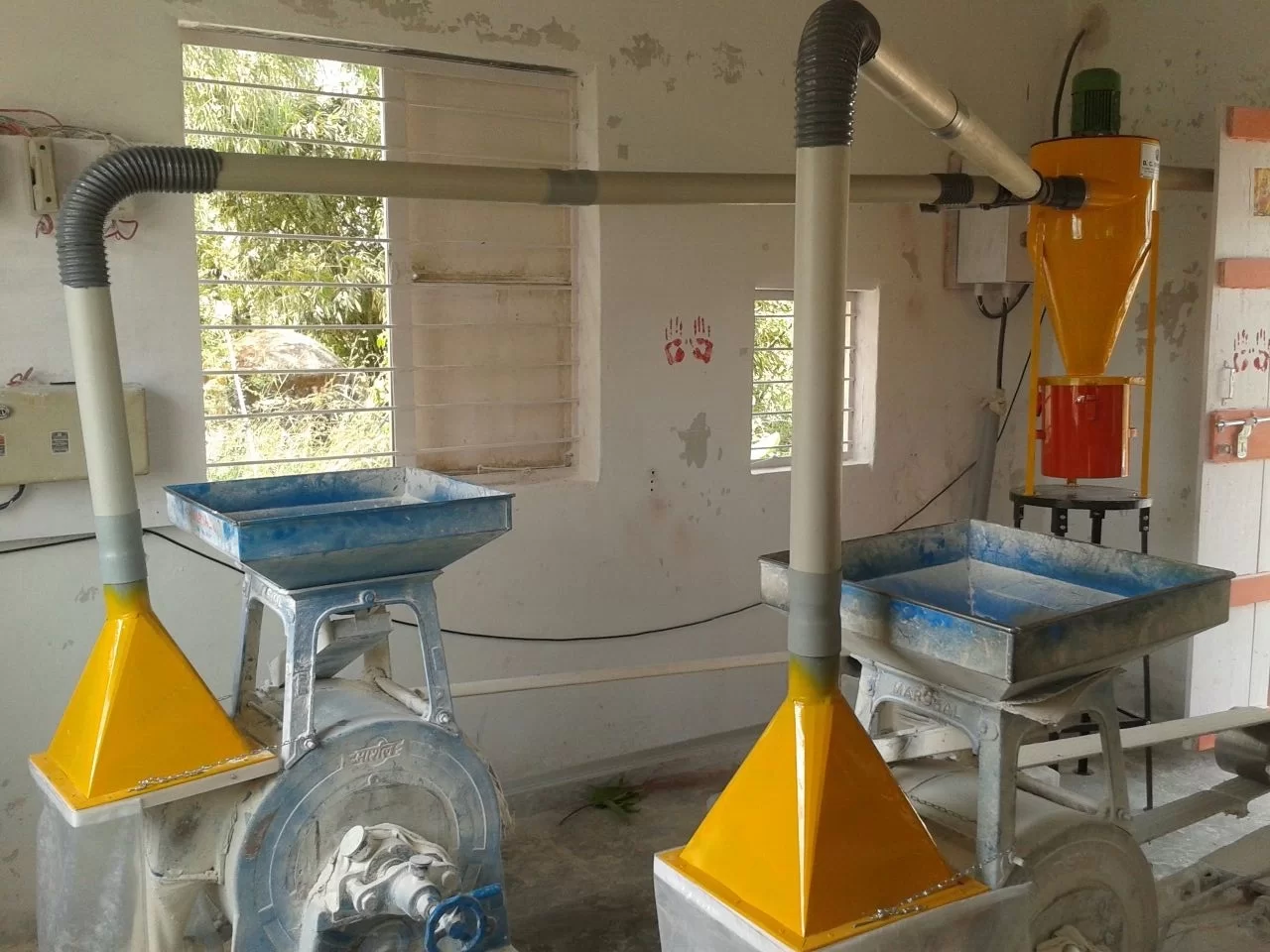Flour Mill Dust Collector
Home / Products / Dust Collector Manufacturers/ Flour Mill Dust Collector
Flour Mill Dust Collector Manufacturer
A cement silo dust collector, also known as a cement silo vent filter, is a specialized dust collection system designed to capture and control airborne dust generated during the loading and unloading of cement into and out of storage silos. Here’s an overview of cement silo dust collectors, including their features, working principle, applications, benefits, and considerations:
Working Principle
- Inlet: Airborne flour dust generated during the milling process enters the flour mill dust collector through an inlet port.
- Filtration: As the air passes through the filter media inside the dust collector, flour dust particles are captured on the surface of the filter cartridges or bags, while the cleaned air is discharged through an outlet port.
- Bag Cleaning: Periodically, the filter media are cleaned to remove accumulated flour dust and maintain optimal filtration efficiency. This is typically achieved using a pulse-jet cleaning system, as described earlier.
- Collection: The dislodged flour dust falls into the integrated collection hopper or bin located at the bottom of the dust collector, where it is collected for disposal or recycling.
- Outlet: The cleaned air exits the dust collector through an outlet duct or stack and is discharged into the atmosphere.

Flour Mill Dust Collector
Features of Flour Mill Dust Collector
- Compact Design: Flour mill dust collectors are often designed with a compact footprint to fit into the limited space available in flour milling facilities.
- Filter Media: They feature specialized filter media, such as filter bags or cartridges, designed to efficiently capture and retain fine flour particles while allowing clean air to pass through.
- Pulse-Jet Cleaning System: Many flour mill dust collectors utilize a pulse-jet cleaning system to periodically clean the filter media. This system involves releasing short bursts of compressed air to dislodge accumulated flour dust, ensuring continuous filtration efficiency.
- High-Efficiency Filtration: Flour mill dust collectors offer high-efficiency filtration, capable of capturing fine flour particles and preventing them from escaping into the atmosphere.
- Durable Construction: They are typically constructed of robust materials such as steel or stainless steel to withstand the abrasive nature of flour dust and the demanding operating conditions encountered in flour milling facilities.
- Integrated Hopper: Some models feature an integrated collection hopper or bin at the bottom of the dust collector to collect the captured flour dust for disposal or recycling.
Applications of Flour Mill Dust Collector
- Flour Milling Facilities: Flour mill dust collectors are essential in flour milling facilities to control airborne flour dust emissions during the various stages of the milling process, including cleaning, grinding, and packaging.
- Bakery and Food Processing: They are utilized in bakery and food processing plants to capture flour dust generated during dough mixing, dough handling, and baking operations.
- Grain Handling and Processing: Flour mill dust collectors find applications in grain handling and processing facilities, including grain elevators and grain storage silos, to control dust emissions during grain milling and handling operations.
Benefits of Flour Mill Dust Collector
- Dust Control: Flour mill dust collectors effectively control airborne flour dust emissions, reducing the risk of respiratory issues and minimizing health and safety risks for workers and nearby communities.
- Regulatory Compliance: They help flour milling facilities and food processing plants comply with environmental regulations and emission standards governing air quality and particulate matter emissions.
- Improved Air Quality: By capturing and removing flour dust from the air, dust collectors contribute to improved indoor air quality, reducing the risk of respiratory issues and maintaining a clean working environment.
- Equipment Protection: They protect downstream equipment, machinery, and storage facilities from flour dust buildup and contamination, minimizing maintenance costs and downtime.
Considerations
- Filter Media Selection: Regular inspection, cleaning, and replacement of filter cartridges or bags are essential to maintain optimal filtration efficiency and prevent pressure drop and airflow restrictions.
- System Design: Proper sizing, layout, and configuration of the dust collector system are critical to ensure adequate airflow, dust capture efficiency, and compliance with regulatory requirements.
- Material Handling and Disposal: Proper handling and disposal of collected flour dust are necessary to prevent environmental contamination and comply with waste disposal regulations.
- Operating Conditions: Consideration should be given to operating conditions such as temperature, humidity, and dust load to ensure proper functioning and longevity of the dust collector system.
